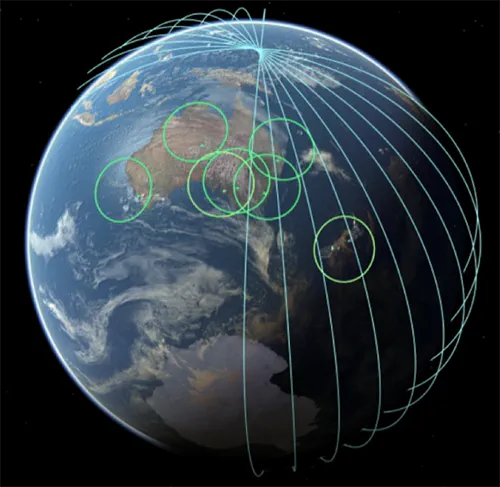Availability, outage, and capacity of spatially correlated, Australasian free-space optical networks
Nov 1, 2022· ,,,,,,,·
0 min read
,,,,,,,·
0 min read
Marcus Birch
James R. Beattie
Francis Bennet
Nicholas Rattenbury
Michael Copeland
Tony Travouillon
Kate Ferguson
John Cater
Mikhael Sayat
 Simulated satellite orbits around our optimal ground station network.
Simulated satellite orbits around our optimal ground station network.Abstract
Network capacity and reliability for free space optical communication (FSOC) is strongly driven by ground station availability, which is dominated by local cloud cover causing an outage. Here, we combine remote sensing data and novel methods to provide a generalized framework for assessing and optimizing optical ground station networks. This work is guided by an example network of eight Australian and New Zealand optical communication ground stations that span approximately 60° in longitude and 20° in latitude. Utilizing time-dependent cloud cover data from five satellites, we present a detailed analysis that determines the network availability and diversity, which showed that the Australasian region is well-suited for an optical network with a 69% average site availability and low spatial cloud cover correlations. Employing methods from computational neuroscience, we provide a Monte Carlo method for sampling the joint probability distribution of site availabilities for an arbitrarily sized and point-wise correlated network of ground stations. Furthermore, we develop a general heuristic for site selection under availability and correlation optimizations and combine it with orbital propagation simulations to compare the data capacity between optimized networks and the example network. We show that the example network may be capable of providing tens of terabits per day to a low Earth orbit satellite and up to 99.97% reliability to geostationary satellites. We therefore used the Australasian region to demonstrate, to the best of our knowledge, novel, generalized tools for assessing and optimizing FSOC ground station networks, as well as the suitability of the region for hosting such a network.
Type